Savourna Stevenson – Harp
Aly Bain – Fiddle
Danny Thompson – Fiddle
Author Archives: simon
Harp Masterclass
Savourna Stevenson during a recent masterclass. Savourna, one of the department’s music tutors, is a world famous exponent of the Scottish harp, having played with a diverse range of musicians including Fairport Convention. Martin Carthy, Mike Travis, The Bhundu Boys and Peter Gabriel. This is her playing one of her own impressionistic compositions.
Savourna Stevenson & The Chemiranis
THE SCOTSMAN • JIM GILCHRIST • THE ARCHES, GLASGOW ****
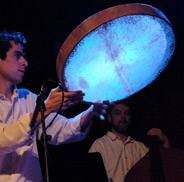 SAVOURNA Stevenson has developed an utterly distinctive and inventive harp sound, its Scottish roots infused with eclectic elements, resulting in lithe, jazz inflections or richly toned, impressionistic languor.
SAVOURNA Stevenson has developed an utterly distinctive and inventive harp sound, its Scottish roots infused with eclectic elements, resulting in lithe, jazz inflections or richly toned, impressionistic languor.
She was clearly delighted to be teaming up with two of the superb Marseilles-based Iranian percussionist family, the Chemiranis, and the results were frequently exhilarating. A lengthy percussion duet demonstrated the Chemiranis’ razor-sharp interaction and the multi-voiced chatter of their drums, before the ensemble, joined by double-bassist Brian Shiels and Gaelic singer Alyth McCormack, presented Persian Knight and Celtic Dawn, Stevenson’s settings of the words of the Lebanese poet and philosopher Kahlil Gibran (some of it translated into Gaelic by Aonghas MacNeacail).
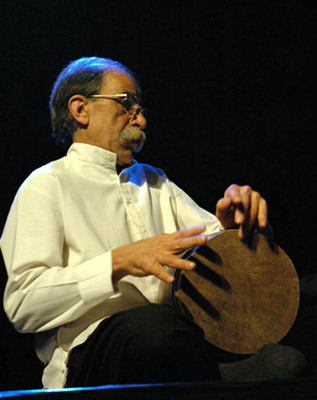 These made for eloquent lyrics, sensitively set and beautifully sung by McCormack (with the ensemble joined briefly by a second harpist, June Naylor).
These made for eloquent lyrics, sensitively set and beautifully sung by McCormack (with the ensemble joined briefly by a second harpist, June Naylor).
Other effective instrumental pieces included the raga-like Emily’s Calling, with a single drum whirring alongside the harp, and Stevenson’s stealthy chiming over thrumming drums and bass in Time.
This was frequently beguiling music, delicate and intricate as fretwork but, between the rumble of passing trains and the intrusively noisy crowd allowed into the adjoining space, the Arches wasn’t the best place to appreciate it. Was that a dramatic flourish of Iranian drumming, or just the 8:15 for Wemyss Bay?
Well connected from the Middle East to Sex and the City
review by SUSAN MANSFIELD – The Scotsman
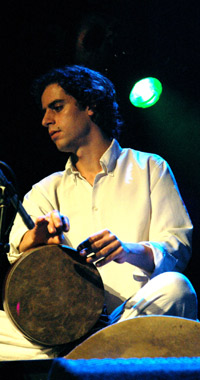 SAVOURNA Stevenson boldly takes the clarsach where no clarsach has gone before. In her hands, the Celtic harp has voyaged into the territory of bluegrass banjos, sitar-style cascades, Indian ragas and African beats.
SAVOURNA Stevenson boldly takes the clarsach where no clarsach has gone before. In her hands, the Celtic harp has voyaged into the territory of bluegrass banjos, sitar-style cascades, Indian ragas and African beats.
A concert at Celtic Connections will preview tracks from her forthcoming album, her ninth, which has a distinctly Middle Eastern flavour. But this is only one aspect of her work.
“Scotland’s most adventurously accomplished clarsach player”, as she has been called, has many other strings to her harp, from writing orchestral work, to having her music featured on Sex and the City.
Persian Knight Celtic Dawn – a typical Stevenson title, with a quirky twist of humour – features the playing of Iranian percussionists, the Chemiranis, and in particular the zarb, a drum played with the fingers which can produce as many different notes as a piano and is described by Stevenson as “mesmerising”.
Two of the Chemiranis will join Stevenson for her Celtic Connections gig at the Arches on Saturday.
They first met and played together at the Real World Festival. “I was doing an all-night live broadcast for Radio 3, and all the artists were listening to each other as we waited for our turn to play, appreciating each other’s music. Argentine accordionist Raoul Barbosa was there, the Chemiranis and myself, and we all just started playing together. It was a lovely impromptu playing experience.”
She promised the Chemiranis that when the right opportunity arose, they would collaborate. When Stevenson began to write songs for her new album, using text from ‘The Prophet’, by Lebanese writer Kahlil Gibran, she realised the time had come.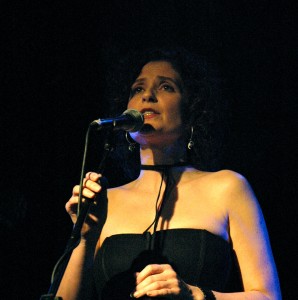
“The album will be very much a meeting of cultures from East and West,” she says. “The intricacy and ornament of Persian music is a little like Celtic music. I want the Chemiranis to bring some of their culture to it.”
She was reminded of the musical potential of ‘The Prophet’ in 2002 when she was asked to play at Peter Gabriel’s wedding “on a beach in Sardinia”, at which Gibran’s passage on marriage was one of the readings. She has now set that, along with two other passages, to music. Gibran’s ‘Joy and Sorrow’ has been translated into Gaelic by her brother-in-law, the poet Aonghas MacNeacail, and will be sung by Alyth McCormack.
“I love to hear the human voice on my records. Just as music is an international language, the words of Gibran speak to anybody and everybody. It’s full of wonderful messages and symbols, a book you keep on the shelf and dip into. And it’s so international, we all feel the same about marriage, children, friendship.”
Stevenson is also increasingly being recognised as a classical composer. In 2001, she received a Creative Scotland Award – “a life-changing experience” – to write an orchestral work for young people. The resulting symphonic piece, ‘Misterstourworm and the Kelpie’s Gift’ was performed to great acclaim in 2003, with the actor Billy Boyd as the narrator.
“It was so successful that Children’s Classic Concerts decided to commission another one, which was an absolute joy,” she says. Hansel and Gretel was performed this season by the Scottish Opera Orchestra to capacity crowds at the Glasgow Royal Concert Hall, and Usher Hall in Edinburgh, narrated by Taggart actress Blyth Duff, wearing “a fantastic pair of witchy shoes.”
It’s a challenge for Stevenson to switch between different types of music, one day composing for herself at the clarsach, the next sitting at a desk with a full orchestral score. “It’s a very different world to break into, but I think it’s a really healthy thing to be involved in so many different kinds of music”.
“I’ve had such a warm rea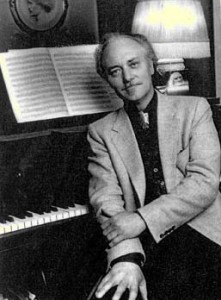 ction to my music from the orchestral players, maybe there’s something new for them in the fact that I started out in traditional music, with the likes of Fairport Convention and Aly Bain, and have been involved in world music and jazz. Hansel and Gretel also has a strong East-European element.”
ction to my music from the orchestral players, maybe there’s something new for them in the fact that I started out in traditional music, with the likes of Fairport Convention and Aly Bain, and have been involved in world music and jazz. Hansel and Gretel also has a strong East-European element.”
She is following in the footsteps of her father, the composer Ronald Stevenson, who peppered her early piano lessons with eclectic musical influences. “I’m very lucky to have been exposed to so many different types of music from very early on. My father was passionate about Lewis Psalm-singing, pibroch and jazz, as much as classical music, and he would talk to me about these things when he was teaching me the piano.”
However, of all the places her music has ventured, perhaps the most unexpected is on to the set of Sex and the City, where a recording of her string quintet was used for scenes such as Charlotte’s wedding.
“My record company phoned me up completely out of the blue and said, ‘Somebody wants to use your music for Sex and the City’. I was a bit shocked, but it certainly gave me a bit more street cred with my teenage son and his mates.”
The Lord of the Strings
Sunday Herald
Children’s Classic Concerts
Usher Hall, Edinburgh by Christopher Lambton
Is it really 10 years since Children’s Classic Concerts had the audacity to offer real live orchestral music to children? The idea is simplicity itself: a big orchestra and real music, the only concession to tender youth being brevity. It has been a success from the start – a Scottish innovation that has spawned imitators in England and overseas. CCC has had its ups and downs, though.
I am one of those grumpy critics who has ignored screams of pleasure from his own children in order to fulminate against silly lighting or ill-prepared theatrical gestures. But no-one ever said it would be easy. It has been a challenge: one problem being to devise a format that allows children to enjoy the concerts when they are three and still to enjoy them when they are thirteen.
In this concert CCC comes of age triumphantly. Conductor and artistic director Christopher Bell has found an excellent balance between chat and music. The highlight is a new commission from Savourna Stevenson, Misterstourworm and the Kelpie’s Gift, a brilliantly coloured showpiece based on a fusion of folk tales narrated with gusto by Lord of the Rings star Billy Boyd. I was prepared to harrumph when Boyd later mounted the podium and pretended to conduct the William Tell Overture but, in truth, I laughed loud.
Children’s Classics
The Herald
Royal Concert Hall, Glasgow • Michael Tumelty ****
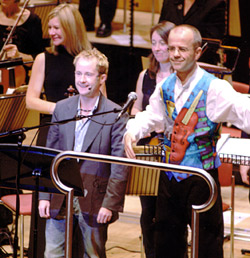 Savourna Stevenson should be feeling extremely pleased with herself as she emerges from a weekend that doubtless was tinged with nervousness. By any criteria, her first full exercise for symphony orchestra, Misterstourworm, a tale of myth and legend, of magic and monsters, woven around the creation of Scottish islands from the west coast to Orkney, can only be judged a resounding success.
Savourna Stevenson should be feeling extremely pleased with herself as she emerges from a weekend that doubtless was tinged with nervousness. By any criteria, her first full exercise for symphony orchestra, Misterstourworm, a tale of myth and legend, of magic and monsters, woven around the creation of Scottish islands from the west coast to Orkney, can only be judged a resounding success.
Though in the early stages of composition there was the explicit precedent and inspiration of Prokofiev’s Peter and the Wolf, by the time of completion of the project, a two-year venture funded by a Creative Scotland award, very little of that original impetus remained, barring a close reference in the theme associated with Coran, the hero of the tale, woven with characteristic elan by playwright Stuart Paterson. Indeed, in so far as there is a didactic element to Peter and the Wolf, Stevenson’s often-beautiful and exciting composition is in a different sphere to Prokofiev’s yarn, concentrating more, as it does, on colour and atmosphere than on characterisation through individual instruments.
The orchestral imagery that permeated her music was impressionistic and, in at least one instance, where tumbling woodwind scales magically represented the water streaming off the back of a kelpie, ravishing and exquisite.
True, Misterstourworm, conducted by Christopher Bell as the centrepiece of a rather overlong children’s concert, and played with gusto by the RSNO, sounded as though it could have used another rehearsal for familiarisation, and it cried out for visual imagery to clarify the progress of the story, narrated with increasing relish by Billy Boyd; but it is a splendid addition to the repertoire which, one hopes, will circulate and return.
Going back to her roots
The Herald
Savourna Stevenson is about to premiere her first orchestral work, a Scots tale of monsters and legend. By Michael Tumelty
BY her own admission, Savourna Stevenson is feeling “a bit desolate” at the moment. With the completion of Misterstourworm – The Kelpie’s Gift, her first piece for full symphony orchestra, the renowned harpist and composer has reached the end, or rather is approaching the climax, of a project that has dominated and permeated her creative life for two years.
She is in that peculiar hiatus between having put the last dots to her new work, which will be premiered this weekend by the RSNO, and hearing what the music actually sounds like. Nothing there, you might think, that hasn’t been experienced by every composer who pours his or her thoughts into a score, then wonders if the music will come off the page and spring into life. Yet, for Stevenson, whose new, 14-minute orchestral work will be played in Magic and Monsters, the first concerts of the new season by the Children’s Classics Concerts organisation, it represents a major move in her career, one of those “hold your breath” moments.
On the one hand, it’s a new step, and she has done “nothing like it before”. On the other, it is a conscious attempt to “pull together” many of the multiple strands of the music that has featured throughout her diverse career.
A narrative tale with music, built around the legend of the creation of Orkney and the Hebridean islands, Misterstourworm is the fruit of a Creative Scotland Award, whose handsome financing of (pounds) 25,000 has enabled Stevenson to undertake the “once in a lifetime” opportunity of moving into the territory of the symphony orchestra, and taking with her her long-time associates and close collaborators, writer Stuart Paterson, who has scripted the children’s tale, and actor Billy Boyd, who has gone on to big- screen fame through his Hobbit character in Lord of the Rings, and who is stepping off the publicity machine for the third film to return to his native Scotland and narrate the story in the two performances this weekend.
The tale of monsters, myths, and legends, which is written to through-composed music with narration, draws extensively on Scottish music influences and is consciously trying to avoid the Peter and the Wolf syndrome by resisting characterisation through individual instruments.
There is another element that, for Stevenson, adds an edge to the new experience of writing for symphony orchestra. She seems consciously not to make a big deal of it, but her conversation is peppered with references to her father, the veteran classical composer, Ronald Stevenson. “I suppose I’ve been running away all my life from what my father’s been doing; and now here I am doing it.”
She has, of course, shown the score of Misterstourworm to the great man, who, she says, has expressed nothing but support. That he is a major influence on her musical life is beyond question. As the musician in a family of three children – with actress Gerda her sister, and violin-maker Gordon her brother – Savourna Stevenson has always been conscious of the presence of her composer father.
Even as she became established in working with front-line names in traditional music, including Aly Bain, June Tabor, Martin Carthy, Fairport Convention, and Eddi Reader, she was aware that she wanted resolutely to plough her own furrow, through her compositions and what she calls her “quest for the harp”.
It goes way back. “I was desperate to find my own musical niche as a teenager. I lived with a fear: can I do things? I also lived with a demand for perfectionism from my father. Though I was always encouraged, and always received helpful advice, I guess I kicked away from it.
“I’ve spent a lot of time trying to make the harp a contemporary instrument. I never wanted it to be a museum piece, which is why you’ll find me doing things like pitch bends or strumming the strings.”
That questing approach to the instrument and the music has led Stevenson to the remarkable tapestry of musical diversity with which she is indelibly associated.
With the encouragement of musical colleagues, she has “dared to go bigger and further, to learn about other instruments and work in different areas”.
She has worked with wind and brass instruments in a jazz context. She’s worked extensively with Womad, the World of Music, Art, and Dance. For almost 20 years she has worked in music theatre, allied to scriptwriter Stuart Paterson, in shows at the Royal Lyceum and Dundee Rep. She is closely associated with music education.
And she has composed. Her Tweed Journey, the tracing of a musical river from source to sea, was commissioned by Judy Steel. In a number of her commissions, she has worked with words by Robert Louis Stevenson and John Buchan. In her String Quintet, which has developed an off-the-wall life of its own in a very peculiar context, she used the classical format of the string quartet, plus harp.
What she wanted to do in her Creative Scotland project, which has resulted in Misterstourworm, was “to dare myself to pull these strands together, write for orchestra, and to produce something not concentrating on the harp as an instrument”.
She wrote the piece on keyboard, with advice from a composer colleague, then orchestrated it with further advice and help from a friend who is a professional orchestrator working in the film business.
She found it a massive task, which entailed setting aside other work, and isolating herself from many of her other musical interests. The exercise was complicated by the fact she has a young family, including an 18-month-old baby. How did she cope? “Stress and panic,” she says, unhesitatingly.
As demanding as she has found the project, it has clearly whetted her appetite. She hopes the new piece will be a “useful” addition to the repertoire, would be intrigued to write for orchestra again, and has a strong inclination also to write for voices, particularly choral voices.
She also has an eye on her string quintet, which she has a notion to re-orchestrate for a fuller string orchestra.
That quintet, meanwhile, has developed its own context (not least as a nice little earner) by being requested by and licensed to Sex and the City for use in the steamy tv series. “There’s nothing quite like the street cred you get when your young son runs into the room shouting, ‘Mum, you’re on Sex and the City again’.”
Magic and Monsters, sponsored by Caledonian MacBrayne. Saturday, Royal Concert Hall, Glasgow; Sunday, Usher Hall, Edinburgh. Both performances at 3pm
Touch me like the Sun
TIME OUT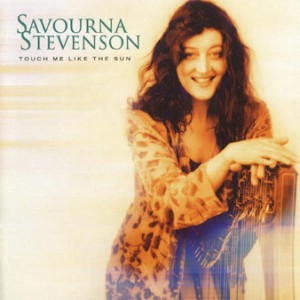
‘Emily’s Calling’ speaks eloquently of Stevenson’s remarkable ability with the harp, impressionistically summoning up her ‘sparkling daughter’. Eddi Reader sings the title track and there is a brilliantly conceived suite in three movements for string quartet ( on which she is joined by violins, viola and cello ). On the solo ‘Blue Orchid’ ( a tune that sounds like it might sit easily in the ‘Kind of Blue’ canon of Miles Davies ) the lively cascading notes of the harp evoke tonalities normally associated with the lute, banjo or Japanese koto. In a class of its own…
Hansel & Gretel
Royal Lyceum Theatre, Edinburgh
Forget the Christmas-show tag. Forget the children. Just go and see this wonderful play like you would any other. I defy any adult to leave this latest Stuart Paterson masterpiece without a tear in their eye. The kids, of course, are made of sterner stuff, but even they sit absolutely spell-bound throughout the two hours of chilling drama. Situated somewhere between a particularly sinister Midsummer Night’s Dream, and an extra-redemptive King Lear, Peterson’s play takes us deep into the forest to face the blackest and bleakest of evils.
Every aspect of Hugh Hodgart’s production is first rate, be it Billy Boyd and Caroline Devlin in lead roles they were born to play, Irene Macdougall excelling herself as the witch and stepmother, Savourna Stevenson’s stunning live score, or Greg Smith’s haunting design..
The Sleeping Beauty
Royal Lyceum Theatre, Edinburgh
Two Tales for the price of one as the brilliant Christmas show specialist Stuart Paterson weaves the story of the princess and the frog into the dream world of the Sleeping Beauty. In doing so, he creates a great rites-of-passage allegory, taking us through the adolescent minefield of temptation, deception and false appearances, finally reaching a rich and rewarding resolution.
As one character says: “The love that wakes between boy and girl, that is the true sleeping beauty.” The awakening is as affecting as it is hard won. With a creepily oppressive design by Greg Smith, and a beautifully delicate score by Savourna Stevenson, Hugh Hodgart’s production demands to be seen by every adult – with or without a child in tow….
